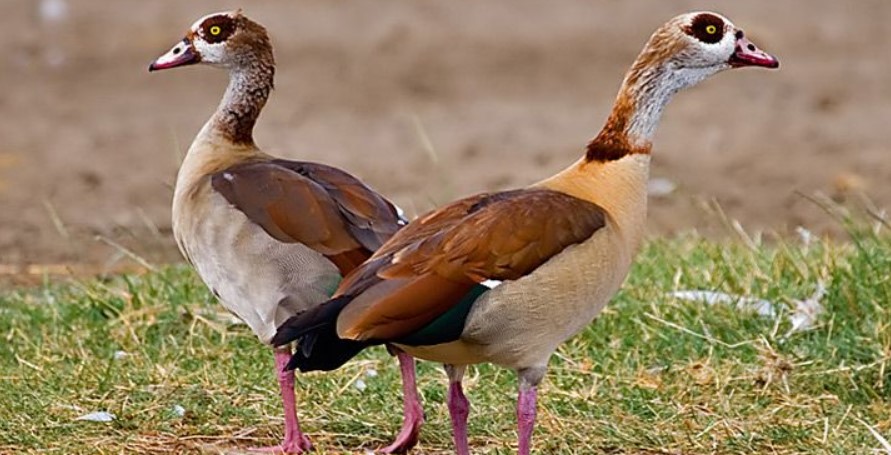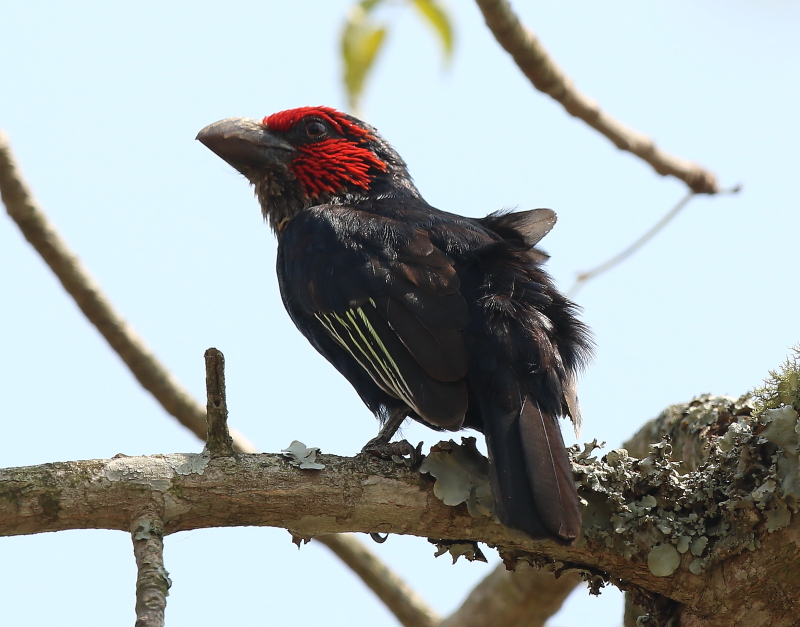A Birding Safari in Queen Elizabeth National Park Uganda. Exploring the Avian Riches of Uganda’s Breathtaking Wilderness. While at Queen Elizabeth you will get a chance to see many of the bird species.
Introduction:
Queen Elizabeth National Park in southwestern Uganda is a birding paradise, offering an unparalleled opportunity to witness the vibrant avian diversity of East Africa. Nestled between the Rwenzori Mountains and the serene waters of Lake Edward, this protected area encompasses a wide range of habitats, including savannah grasslands, wetlands, forests, and the legendary Kazinga Channel. With over 600 species of birds recorded, including numerous endemic and migratory species, a birding safari in Queen Elizabeth National Park is an immersive journey into a world teeming with winged wonders.

The Kazinga Channel:
One of the highlights of a birding safari in Queen Elizabeth National Park is exploring the Kazinga Channel. This natural waterway serves as a lifeline for countless bird species, attracting both water-associated birds and those inhabiting the surrounding woodlands. As you embark on a boat excursion along the channel, the air is filled with a chorus of birdcalls, setting the stage for an unforgettable experience.
Among the avian residents of the Kazinga Channel, the iconic African fish eagle reigns supreme. With its distinctive call and striking plumage, it soars majestically above the water, an emblematic symbol of the African wilderness. Stately gray crowned cranes can also be seen wading gracefully in the shallows, their vibrant red crowns contrasting against their gray bodies. Spotting the elegant malachite kingfisher, with its brilliant green and blue hues, darting along the banks is a sight that never fails to inspire awe.
Beyond the Kazinga Channel:
While the Kazinga Channel steals the spotlight, the avian wonders of Queen Elizabeth National Park extend far beyond its shores. Exploring the park’s varied ecosystems unveils a treasure trove of bird species. In the open savannah grasslands, raptors such as the martial eagle, African hawk-eagle, and also bateleur eagle soar overhead, showcasing their aerial prowess. The acacia woodlands are alive with the calls of beautiful barbets, hoopoes, and sunbirds, their vibrant colors also adding a splash of brilliance to the landscape.
Venturing into the lush forests of Queen Elizabeth National Park presents a different birding experience altogether. Here, one can also encounter the captivating African green broadbill, a small bird with stunning emerald plumage and a distinctive call. The melodious songs of the various cuckoo species reverberate through the canopy, while flashes of red and black reveal the presence of the elusive African paradise flycatcher.
Avid birders
For avid birders, the wetlands of Queen Elizabeth National Park offer an abundance of feathered delights. The Ishasha and Maramagambo swamps, among others, are home to an array of water-associated species. The pied kingfisher, with its characteristic black-and-white plumage and swift diving techniques, is a common sight. Large waterbirds like the African spoonbill and saddle-billed stork add an element of grandeur to the wetland landscape. Delicate African jacanas dance gracefully atop the floating vegetation, their elongated toes allowing them to traverse the water’s surface with ease.
Migratory Species and Conservation:
Queen Elizabeth National Park’s birding allure is further heightened by the presence of numerous migratory species that visit the park during specific seasons. These winged travelers journey thousands of kilometers to escape harsh winters in their breeding grounds, also making the park a vital stopover and wintering site.
The park’s wetlands, in particular, provide essential habitat for migratory birds such as the black-winged stilt, whiskered tern, and also lesser flamingo. Witnessing the spectacle of flocks of these birds taking to the skies in synchronized flight is a testament to the importance of preserving these fragile ecosystems.
Birding in Queen Elizabeth National Park is not only an opportunity for personal enrichment but also a chance to contribute to conservation efforts. As visitors marvel at the stunning avian diversity, they develop a deep appreciation for the need to protect these fragile habitats. The park’s authorities, in collaboration with conservation organizations, work tirelessly to preserve the natural balance and ensure the continued survival of the avian residents. By supporting sustainable tourism practices and engaging in responsible birdwatching, visitors can actively participate in the conservation endeavors aimed at safeguarding Queen Elizabeth National Park’s remarkable birdlife for future generations.

Conclusion:
A birding safari in Queen Elizabeth National Park is a captivating journey through a world filled with feathered marvels. From the enchanting Kazinga Channel and its water-associated species to the diverse ecosystems of the park’s grasslands, woodlands, forests, and wetlands, the avian diversity on display is simply breathtaking. With its status as a global biodiversity hotspot, Queen Elizabeth National Park also stands as a testament to the beauty and fragility of our natural world.
As birdwatchers venture into this wilderness, they are immersing in a symphony of birdcalls, surrounded by vibrant colors and ethereal melodies. Each sighting is a reminder of the delicate balance that exists within these ecosystems, and the importance of conservation efforts to protect these avian treasures.
A birding safari in Queen Elizabeth National Park is not just an opportunity to tick off species from a checklist, but a transformative experience that fosters also a deep connection with nature. It is an invitation to marvel at the wonders of the avian world, to witness the intricate tapestry of life that unfolds before our eyes, and also to be inspired to protect and preserve the remarkable birdlife for generations to come.







